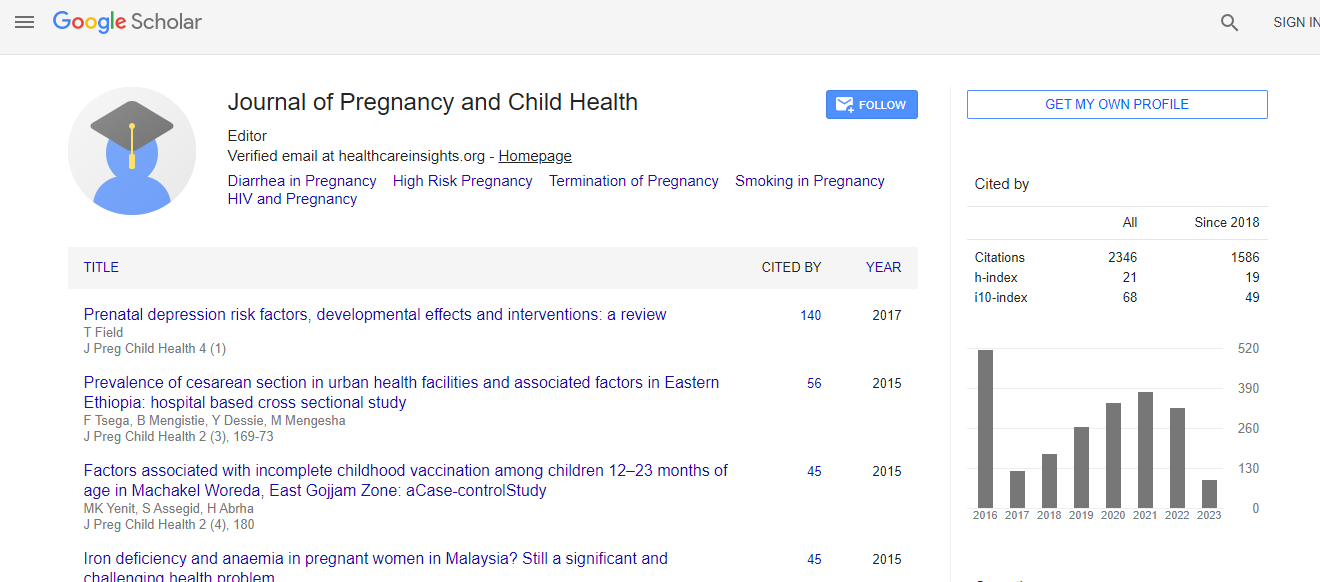Research Article
Determinants of Long Acting and Permanent Contraceptive Methods Utilization among Married Women in Hossana Town, Southern Ethiopia: A Case - Control Study
| Alemu Earsido1*, Abebaw Gebeyehu2 and Teresa Kisi3 | |
| 1Department of Public Health, Wachemo University, Ethiopia | |
| 2Department of Reproductive Health, Institute of Public Health, University of Gondar, Ethiopia | |
| 3Department of Epidemiology and Biostatistics, Institute of Public Health, University of Gondar, Ethiopia | |
| Corresponding Author : | Alemu Earsido Department of Public Health Wachemo university, Ethiopia Tel: 251911356152 E-mail: alexisersido@yahoo.com |
| Received November 16, 2014; Accepted May 22, 2015; Published May 25, 2015 | |
| Citation: Earsido A, Gebeyehu A, Kisi T (2015) Determinants of Long Acting and Permanent Contraceptive Methods Utilization among Married Women in Hossana Town, Southern Ethiopia: A Case - Control Study. J Preg Child Health 2:165. doi: 10.4172/2376-127X.1000165 | |
| Copyright: © 2015 Earsido A, et al. This is an open-access article distributed under the terms of the Creative Commons Attribution License, which permits unrestricted use, distribution, and reproduction in any medium, provided the original author and source are credited. | |
Abstract
Background: Long-acting and permanent contraceptive methods (LAPMs) are highly effective, safe, convenient, and cost effective. Many women in Ethiopia rely on short acting contraceptives. Hence, this study was conducted to assess determinants of long acting and permanent contraceptive methods utilization among married women in Hossana town, Southern Ethiopia.
Methods: A community based unmatched case control study was conducted in Hossana town among married women. Census was done to know the number of cases and controls in the study area before data collection. A total of 420 respondents (140 cases and 280 controls) were selected by using simple random sampling technique. Cases were married women who were using long acting and permanent contraceptive methods whereas controls were married women who were using short acting contraceptive methods. Data entry and cleaning were done by Epi-info version 3.5.3 and exported to SPSS version 20 for analysis.
Result: A total of 414 married women of reproductive age group were interviewed with response rate of 99%. Women with moderate and good level of knowledge about LAPM [AOR=13.9, 95% CI: 6.16, 31.56] and [AOR=8.74, 95% CI: 3.78, 20.2] respectively, discussion about modern contraceptives with their partners [AOR=3, 95%CI: 1.37, 7.11], plan or intention to give birth in the future [AOR=0.5, 95% CI: 0.25,0.98], source of modern contraceptives from non-governmental health facilities [AOR=7.4 95% CI: 2.62, 20.8] and women who had 3-4 children versus children[AOR = 0.42 95% CI: 0.20, 0.90] were determinant factors of LAPM utilization.
Conclusion: More actions should be done in order to increase the utilization of LAPM by promoting discussion between partners about modern contraceptives, women’s knowledge about LAPM and provision of adequate LAPM in public health facilities.

 Spanish
Spanish  Chinese
Chinese  Russian
Russian  German
German  French
French  Japanese
Japanese  Portuguese
Portuguese  Hindi
Hindi 
